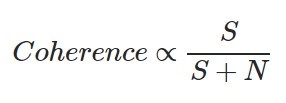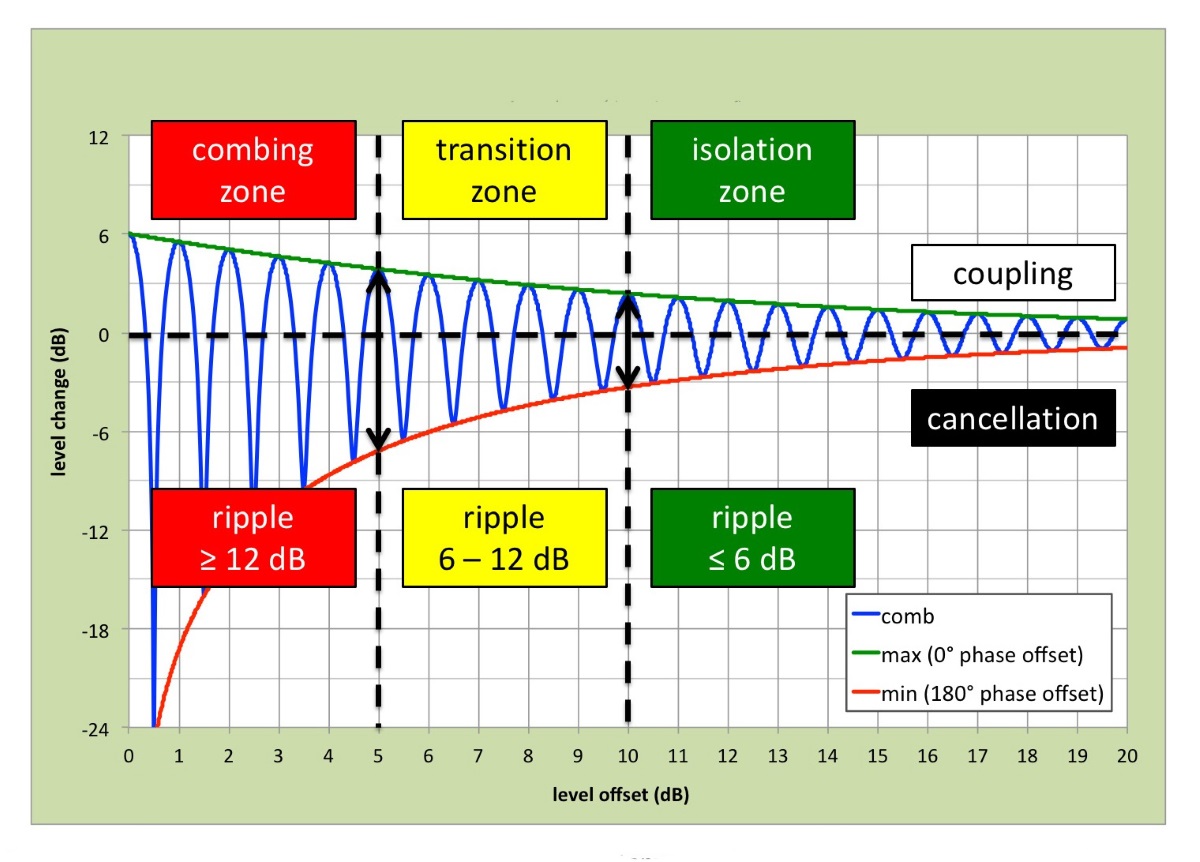
Comb filters appear to have audible pitch. The frequencies of the peaks of a comb filter constitute a harmonic series and the apparent pitch is equal to the frequency of the first peak (fundamental).
Which pitch you perceive is uniquely defined by your listening position with respect to the sound system and surrounding boundaries, regardless of the program material itself, and is therefore a moving target that typically goes up and down in frequency as you walk the room, because you’re dealing with a purely spatial problem.
Whenever you hear phenomena like these, realize that equalization is no longer a viable option unless the apparent pitch remains constant over space (which I yet have to encounter). Just note that every time the direct sound has been cancelled for whatever reason, signal has been replaced by noise (at the nulls or cancels) and both SNR and, inherently, coherence decrease.
It should be emphasized that all of this happens typically after the sound left the loudspeaker(s), and signal processing typically has limited to no merit other than properly time aligning multiple sources, which doesn’t resolve room interaction!
Ripple
The difference between a comb filter’s maxima and minima, expressed in dB, is known as ripple (Figure 3), and it’s arguably the most important metric when designing sound systems.

Ripple is a function of the relative level offset between two or more copies of the same signal (Figure 4). An in-depth explanation of ripple is beyond the scope of this article. (For more information, please consult the chapter entitled “Summation” in all three editions of Bob McCarthy’s “Sound Systems: Design And Optimization.” In the meantime, I encourage you to work with the phase calculator that I’ve set up on my website to gain insight into the balancing act between relative level and time offsets.)

